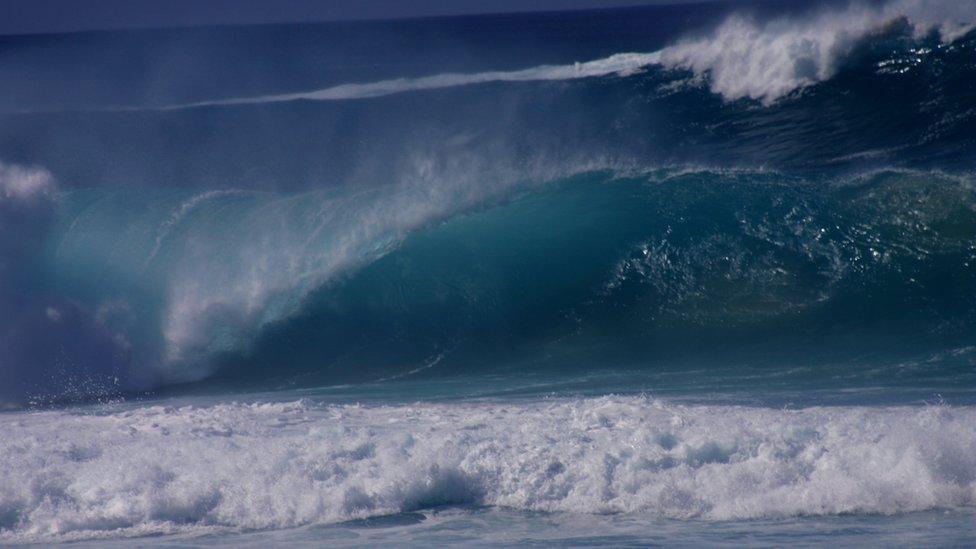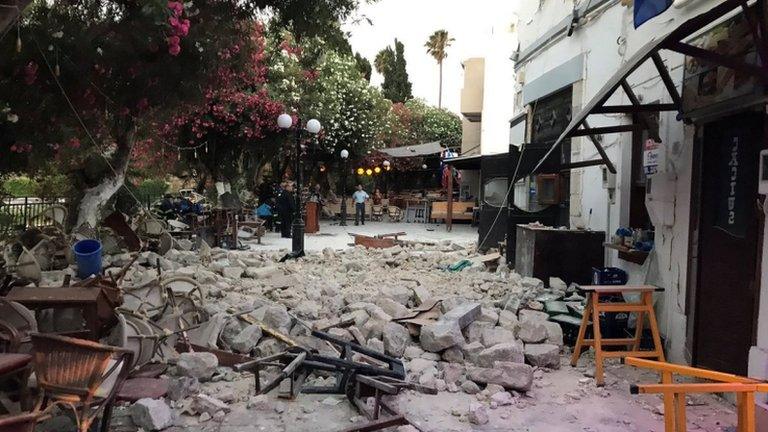Sound waves 'can help' early tsunami detection
- Published
How the warning from sound waves would work
People in high-risk tsunami areas could soon be helped by an early-warning alarm system using sound waves that is being developed by scientists.
Mathematicians think they have devised a way of calculating the size and force of a tsunami in advance of it hitting land, which can help early detection.
Experts say naturally occurring high-speed acoustic gravity waves are created after "tsunami trigger events".
Cardiff University scientists hope to make a real-time early warning system.
Alaska was under a tsunami warning earlier this week after a 7.9-magnitude earthquake struck 280km (173 miles) off the coast of the American state.
The deadliest recorded tsunami was the 2004 Boxing Day Indian Ocean tsunami, which killed almost 230,000 people in 11 different countries.
But scientists in Cardiff hope to help give extra warning time for tsunamis by using the fast-moving underwater sound waves.
"By taking measurements of acoustic gravity waves, we basically have everything we need to set off a tsunami alarm," said Dr Usama Kadri, lead author for the study from Cardiff University's school of mathematics.
Underwater earthquakes are triggered by the movement of tectonic plates on the ocean floor and are the main cause of tsunamis.

Tsumanis are caused by underwater earthquakes
Scientists say sound waves can travel over 10 times faster than tsunamis and spread out in all directions, regardless of the trajectory of the tsunami, making them easy to pick up using standard underwater hydrophones. They say this is an ideal source of information for early warning systems.
In a new study published in the Journal of Fluid Mechanics, Cardiff University scientists show how the key characteristics of an earthquake - such as its location, duration, dimensions, orientation and speed - can be determined when the gravity waves are detected by a single hydrophone in the ocean.
The sound waves move through the deep ocean at the speed of sound and can travel thousands of metres below the surface.
Tsunamis are currently detected by floating buoys that are able to measure pressure changes in the ocean caused by tsunamis.
However, experts say the technology relies on a tsunami physically reaching the buoys.
The current technology also requires the distribution of a huge number of expensive buoys in oceans all around the world.
"Though we can currently measure earthquakes using seismic sensors, these do not tell us if tsunamis are likely to follow," Dr Kadri continued.
"Using sound signals in the water, we can identify the characteristics of the earthquake fault, from which we can then calculate the characteristics of a tsunami. Since our solution is analytical, everything can be calculated in near real-time.
"Our aim is to be able to set off a tsunami alarm within a few minutes from recording the sound signals in a hydrophone station."
- Published23 January 2018

- Published21 July 2017
